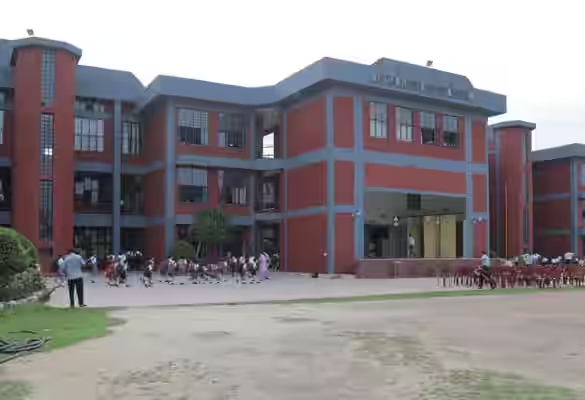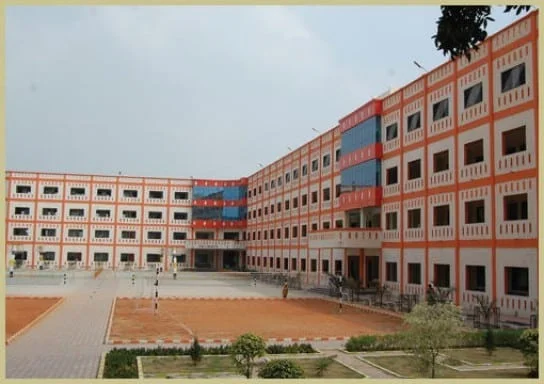In today’s digital age, a school’s website is often the first point of contact for prospective students and parents. For schools in Agra, selecting the right features for their websites is essential to ensure effective communication, engagement, and information dissemination. Here’s a comprehensive guide on how to choose the right website features for your Agra school.

Table of Contents
Toggle1. Identify Your Target Audience
Understanding who will use the website is crucial in determining its features. Consider the following groups:
- Students: They may need access to class schedules, assignments, and educational resources.
- Parents: They will look for information about admissions, events, and communication with teachers.
- Staff: Teachers and administrative personnel may need access to internal resources, calendars, and communication tools.
Tailoring features to these specific audiences will enhance usability and satisfaction.
2. Prioritize Essential Features
When selecting website features, prioritize those that align with your school’s needs and objectives. Here are some essential features to consider:
- Homepage: A welcoming and informative homepage that showcases your school’s mission, values, and latest news.
- Admissions Portal: A user-friendly online application and enrollment system that simplifies the admissions process for prospective families.
- Event Calendar: A calendar feature that displays upcoming events, school holidays, and important dates, keeping parents and students informed.
- Parent and Student Portals: Secure areas where parents and students can access grades, schedules, assignments, and important announcements.
- Contact Information: Clear and accessible contact details for key personnel, including the principal, administrative staff, and counselors.
- News and Announcements Section: A dedicated area for updates on school activities, achievements, and important information.
3. Consider Communication Tools
Effective communication is vital for fostering a strong school community. Include features that facilitate communication, such as:
- Newsletter Signup: A form for parents and students to subscribe to school newsletters, ensuring they receive regular updates.
- Social Media Integration: Links to your school’s social media profiles to encourage engagement and real-time updates.
- Feedback Forms: Tools that allow parents and students to provide feedback or ask questions, promoting open communication.
4. Enhance User Experience with Navigation
A well-structured navigation system is critical for usability. Consider the following:
- Simple Menu Structure: Organize the website into clear categories and subcategories, making it easy for users to find information.
- Search Functionality: Implement a search bar that enables users to quickly locate specific information or resources.
- Mobile Responsiveness: Ensure that the website is optimized for mobile devices, as many users will access it via smartphones or tablets.
5. Integrate Educational Resources
Providing access to educational resources can enhance the website’s value. Consider features such as:
- Resource Library: A section for downloadable materials, including syllabi, guides, and forms.
- Online Learning Tools: If applicable, integrate online learning platforms or tools that support remote learning and student engagement.
- Blog or Article Section: Share educational articles, tips for parents, and updates on teaching methodologies to foster a learning community.
6. Implement Security Features
Security is paramount, especially when handling sensitive information. Ensure the website includes:
- Secure Login Systems: Password-protected areas for students and parents to access private information.
- SSL Certificate: An SSL certificate to encrypt data and secure communications on the website.
7. Plan for Future Growth
As your school evolves, your website should be able to adapt. Consider features that allow for scalability:
- Content Management System (CMS): Use a CMS that enables easy updates and additions to the website without extensive technical knowledge.
- Customizable Templates: Choose templates that can be easily modified to add new features or sections as needed.
8. Seek Feedback and Iteratively Improve
Once the website is live, gather feedback from users. Conduct surveys or hold focus groups with parents, students, and staff to identify areas for improvement. Use this feedback to make iterative updates to the website.
Conclusion
Choosing the right website features for your school in Agra is essential for creating an effective online presence that meets the needs of students, parents, and staff. By prioritizing essential features, enhancing communication, ensuring security, and planning for future growth, your school can build a website that serves as a valuable resource for the entire community. Remember, an engaging and user-friendly website not only reflects your school’s values but also fosters a sense of belonging and connection among all stakeholders.


No responses yet